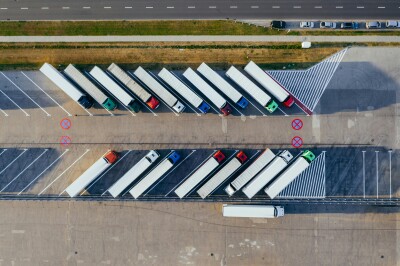In recent years, drones have emerged as a versatile and powerful tool for monitoring environmental and ecological changes. From tracking wildlife populations to assessing the impacts of deforestation, drones have transformed how we can collect data and make informed decisions to preserve our planet and its delicate ecosystems. Not only that, but the rise of eco-friendly drones marks a significant intersection between sustainability and technological innovation, reflecting an emerging trend towards environmentally conscious design and application in the field.
While drones are not a cure-all for environmental challenges, their cumulative contributions are significant. By reducing reliance on harmful chemicals, enabling renewable energy expansion, and supporting reforestation and air quality monitoring, drones are proving to be silent enablers of a greener future. As industries continue to explore new applications, drones are becoming essential tools in the fight for sustainability.
Reducing Carbon Emissions With Last-Mile Delivery Solutions
Drones have been identified to offer significant potential for reducing GHG emissions compared to legacy means of transport such as diesel trucks, leading to a saving of 98% of greenhouse gas (GHG) emissions per kilometer. Even when considering their carrying capacity - since trucks can carry several parcels at a time, whereas drones usually only take one - drones still produce smaller GHG emissions per kilometer than other transport types such as electric and diesel trucks, vans, e-bikes, or helicopters.
Founded in 2017, Wingcopter, a German company, leverages drone technology to establish globally operated last-mile delivery networks and transform logistics, as well as improve lives worldwide by delivering life-saving medicines, vaccines, blood, and essential supplies to hard-to-reach locations. While one of the big focuses is on providing efficient drones that achieve ranges up to 110km, 240 km/h speed, and feature the world’s first triple-drop delivery system, allowing it to deliver up to three packages in a single flight, Wingcopter also works towards a greener planet.
Right from the start, the company ruled out the installation of a conventional combustion engine and focused on battery-powered drones to offer an eco-friendly alternative to traditional delivery methods like motorcycles and helicopters. Last year, the company announced the development of a sustainable, hydrogen-based propulsion system for drones that will not only continue to fly emission-free in the future but also become even more powerful.
Driving Sustainability Across Industries
When deforestation occurs, much of the carbon stored by trees is released back into the atmosphere as carbon dioxide, contributing to climate change. Land use change, especially deforestation, contributes 12–20% of global GHG emissions, making the protection of forests vital in the effort to reduce emissions.
In Austria’s Alps, an infestation of bark beetle is causing devastating effects across the region’s forests since it compromises the spruce tree’s ability to produce nutrients, leading to widespread forest destruction. The high temperatures favor the rapid multiplication of the pest, which, for example, in East Tyrol alone, has laid waste to a third of the forest, prompting urgent action.
Together, the State Forestry Directorate and the East Tyrol District Forestry Inspectorate investigated the use of drones to plant new trees and replace those eaten by the destructive bark beetle, especially in difficult-to-reach locations. “I am convinced that drones will not replace people,” commented Josef Fuchs, Director of Forestry in Tyrol. “But the drone will help us in very steep terrain, where you can’t reforest by hand.”
If proven successful in a year, the initiative can be applied not only to the rest of Austria but also to its neighboring countries.
Making Europe the First Climate-Neutral Continent
On the path to climate-neutral Europe by 2050, one of the European Commission’s priorities is the European Green Deal. Aiming to reduce net greenhouse gas emissions by at least 55% by 2030 compared to 1990s levels, the Commission created a set of proposals to address climate, energy, transport, and taxation policies.
Recognized as integral to achieving the Green Deal’s objectives, drones will play a significant role in revolutionizing transportation, agriculture, environmental monitoring, emergency services, and more. Green Mobility, Precision Agriculture, Environmental Monitoring, Delivery Services, Emergency Services, and Security and Defense are the main applications targeted by the Green Deal.
However, this is not the EU’s first initiative regarding sustainability and drones. Developed by the European Commission back in 2022, the European Drone Strategy 2.0 not only provided a roadmap for integrating drones into Europe’s economy by 2030 but also targeted the creation of an environmentally sustainable ecosystem.
New Environmental Standards
The sustainability of drones and air mobility technologies, such as UAM, AAM, and IAS, relies on factors like energy sources, emissions, noise levels, infrastructure, safety, efficiency, public acceptance, technological progress, and environmental impact evaluations. By prioritizing clean energy, lower emissions, and efficient infrastructure, these technologies can become more eco-friendly. However, achieving this requires careful planning and continuous monitoring to ensure they meet sustainability goals without negatively affecting the environment or communities.
Based on the European Commission’s recommended methodology for assessing the environmental impacts of a product across its life cycle, Product Environmental Footprint (PEF), the European Union Aviation Safety Agency (EASA) is developing a new methodology, Environmental Footprint Aviation (EFA). The goal is to provide a standardized method to evaluate the environmental impact of drones, prevent misleading claims about sustainability, known as greenwashing, and ensure genuine eco-friendly progress in electric aviation.
By providing transparent and consistent data, EASA hopes to enable drone manufacturers and operators to quantify and communicate information regarding their aircraft’s environmental impact on a fair and consistent basis, especially in urban air mobility environments. Pilot studies and further development are planned for late 2024, leading to a second consultation and eventual finalization.
















Comments